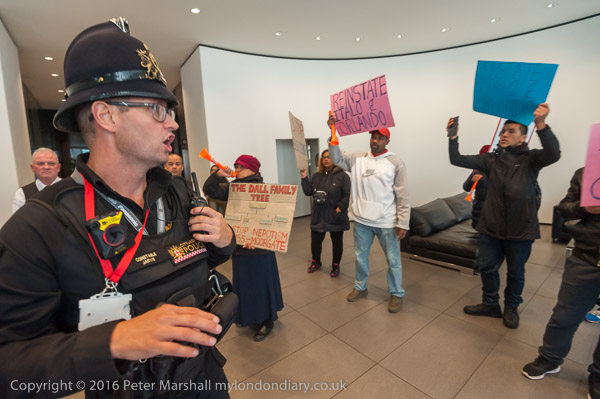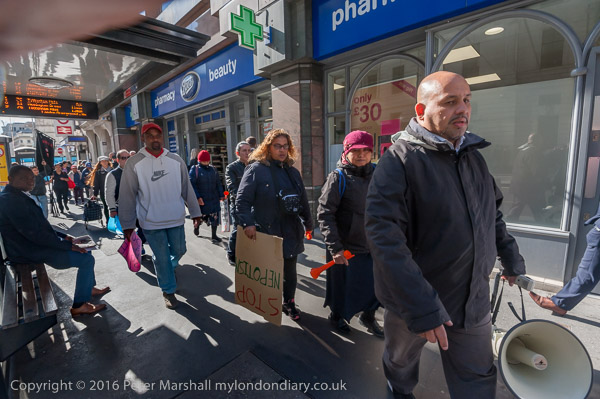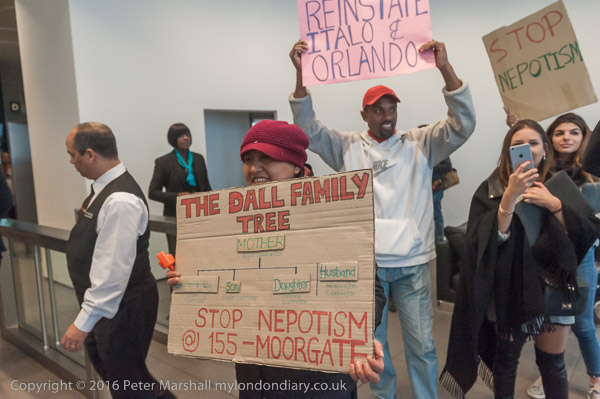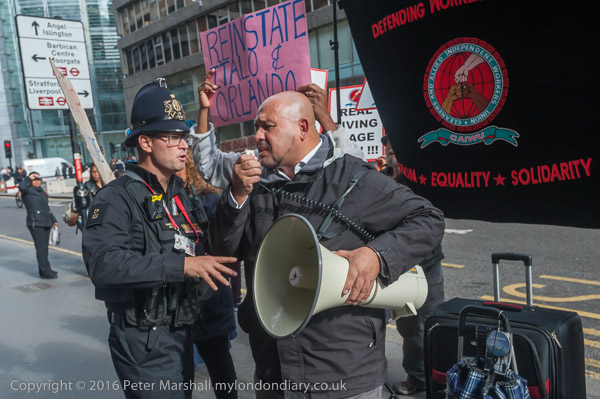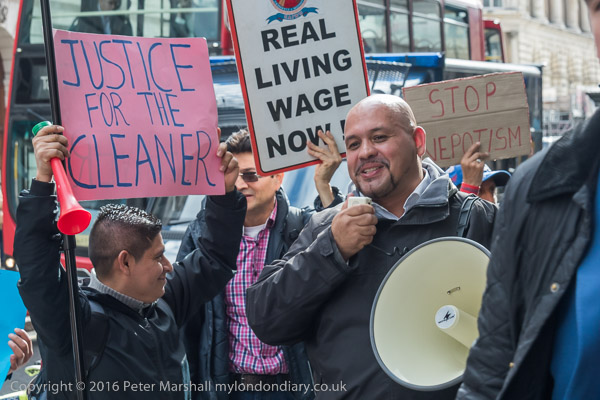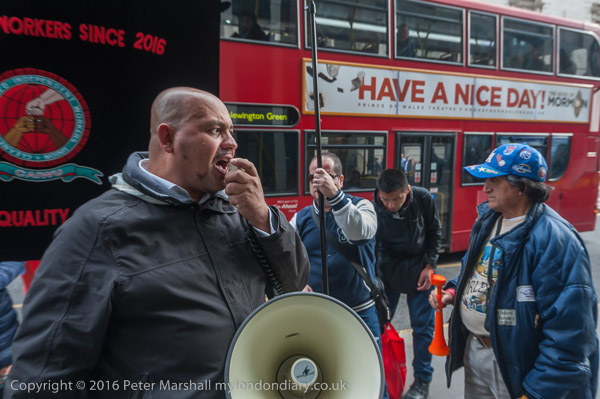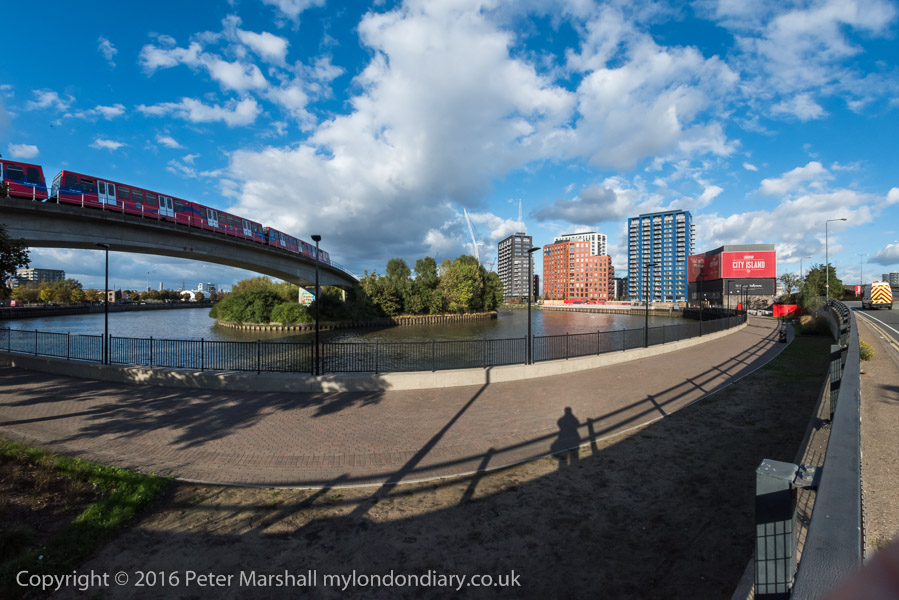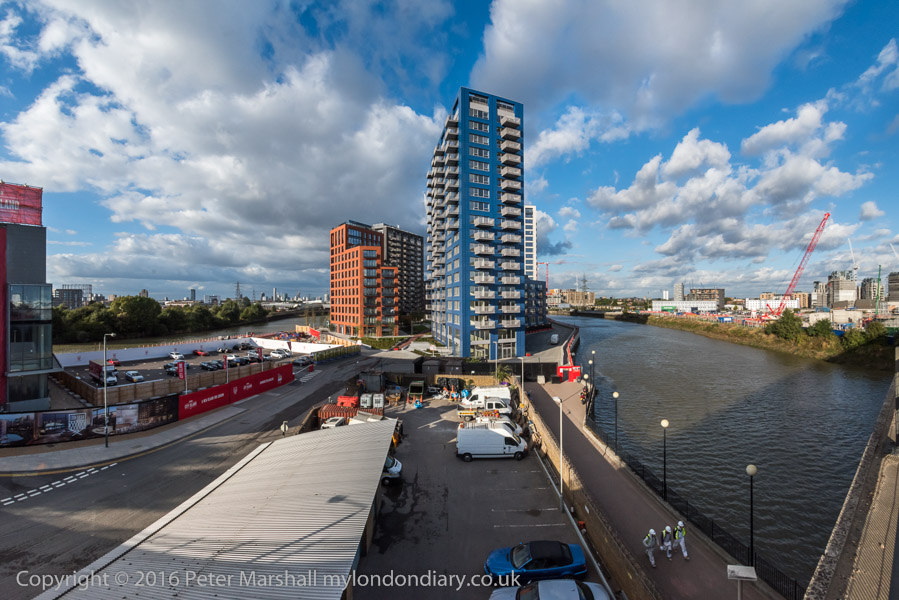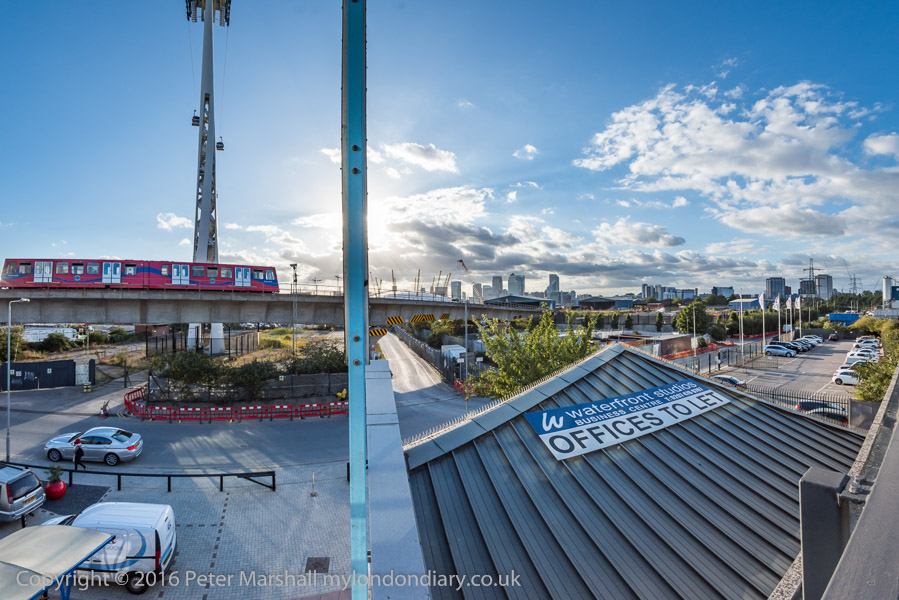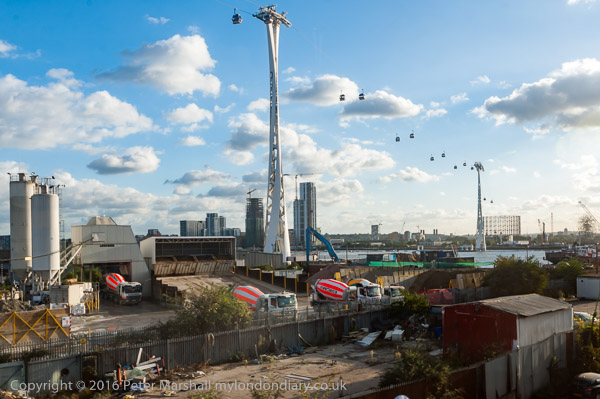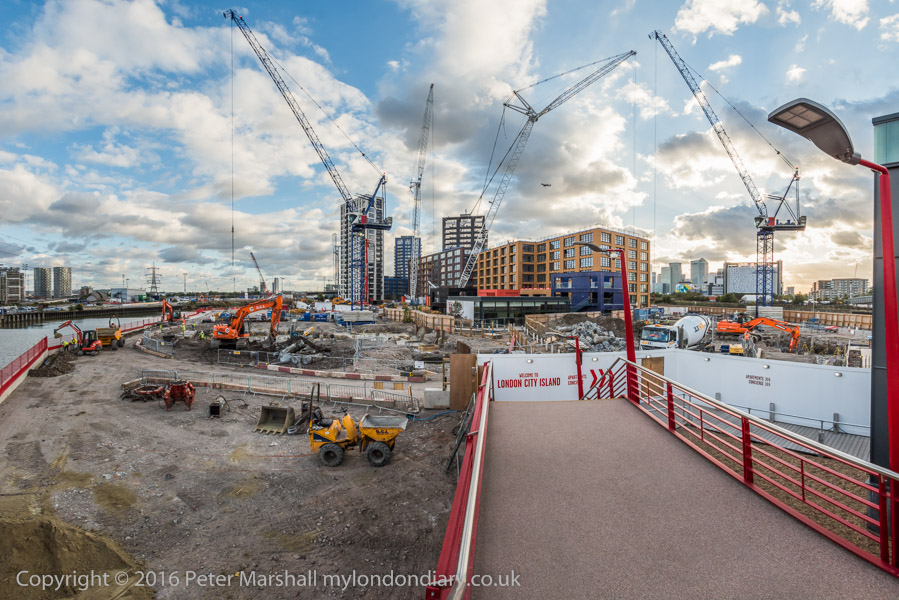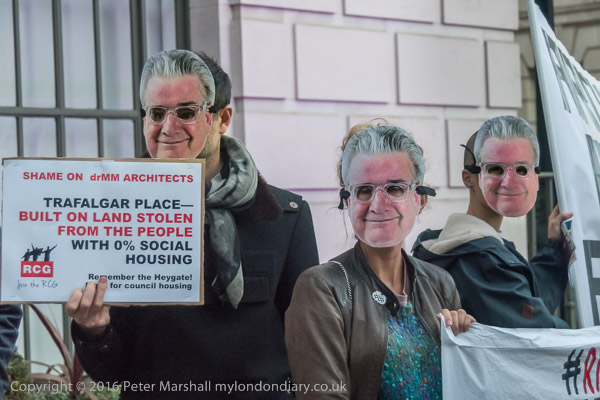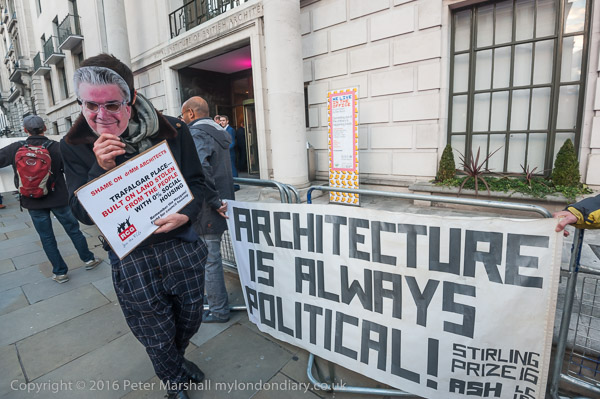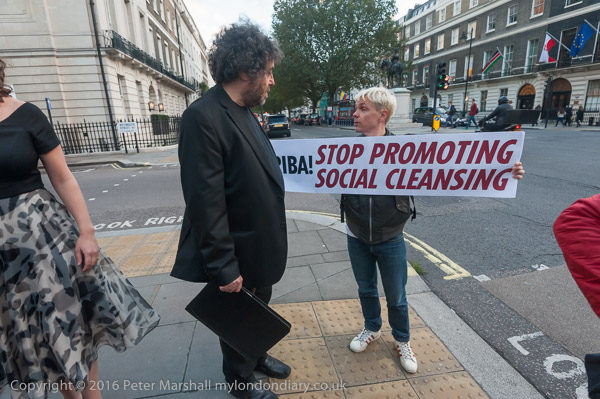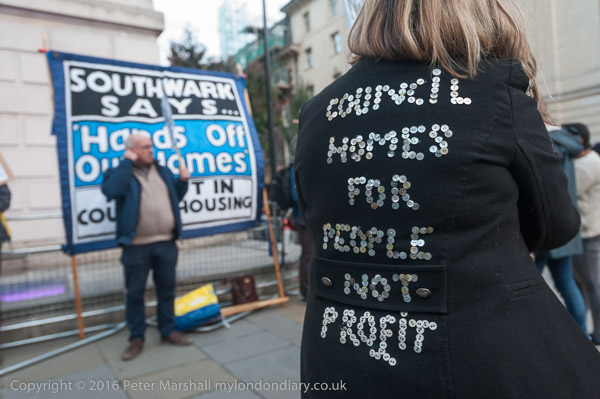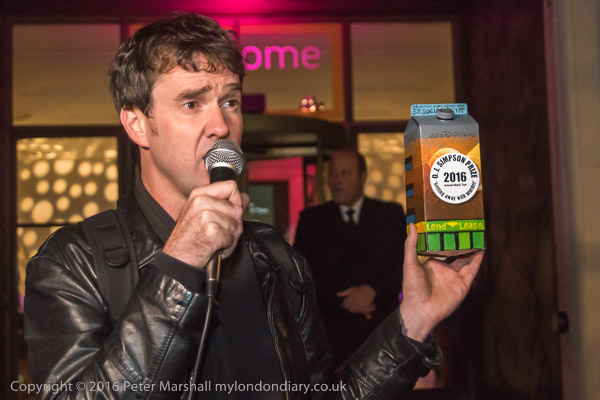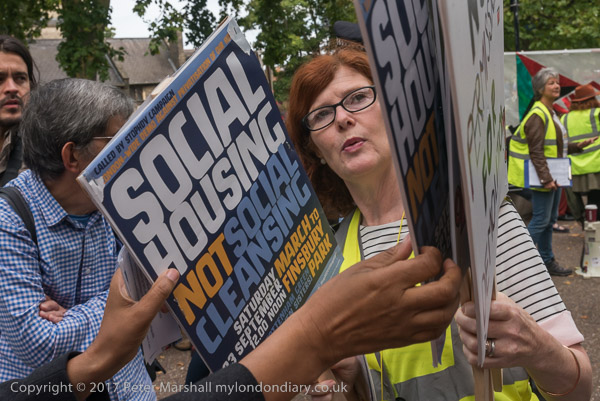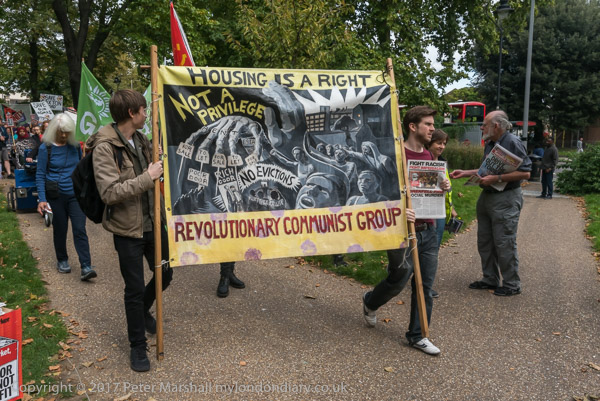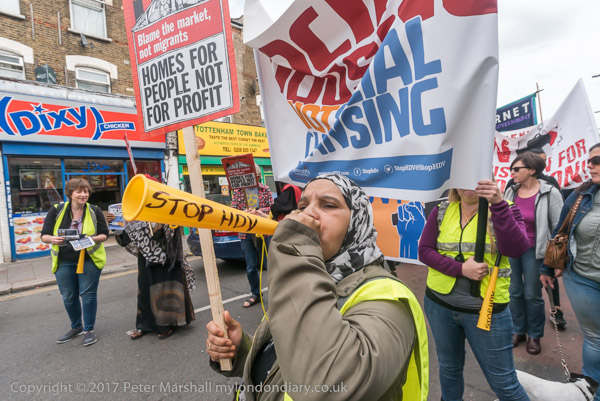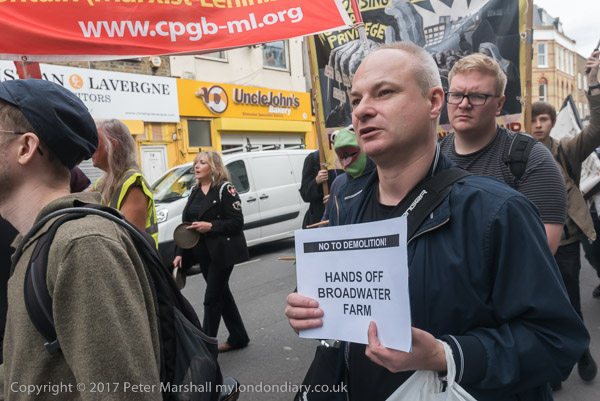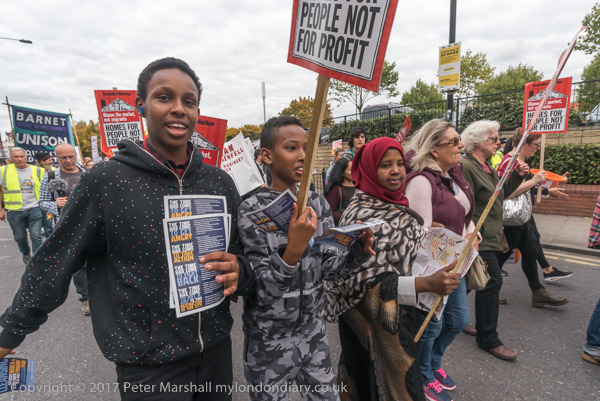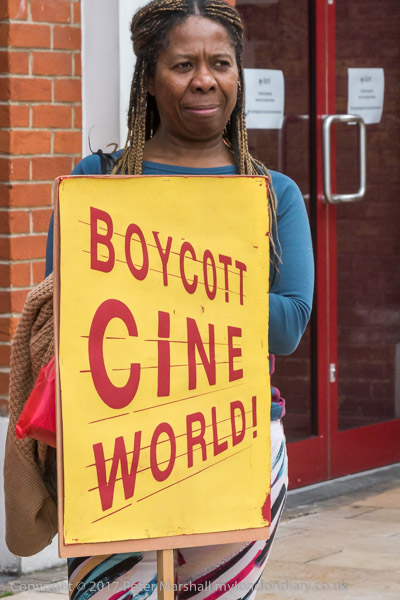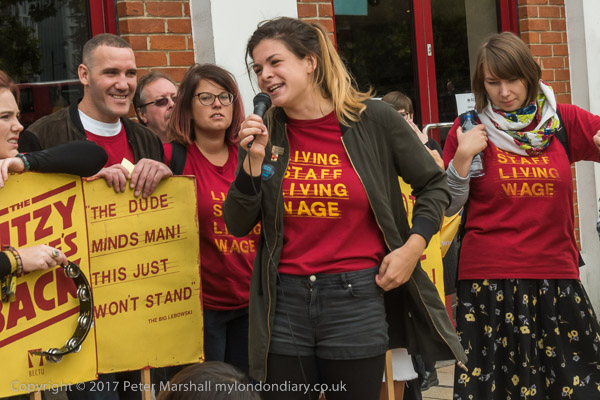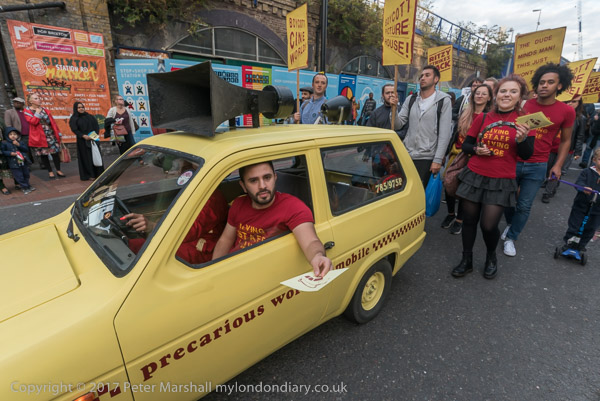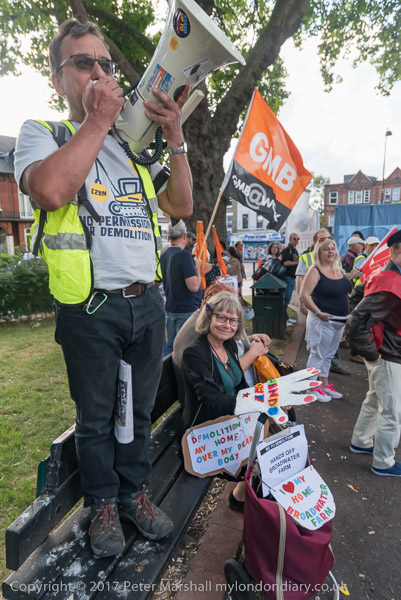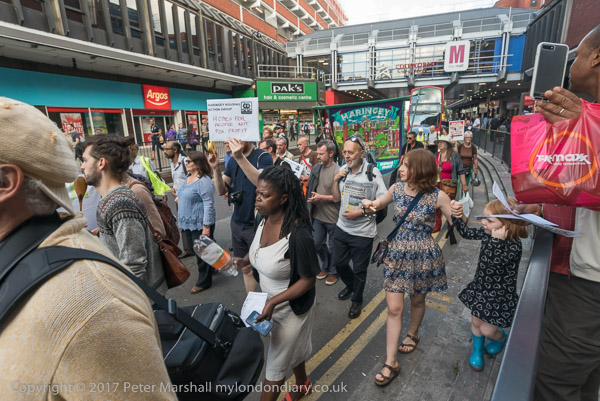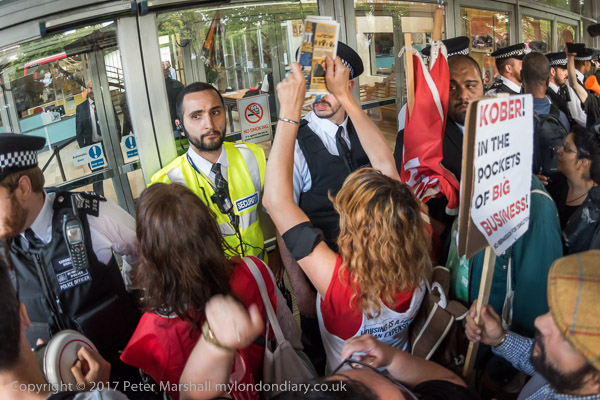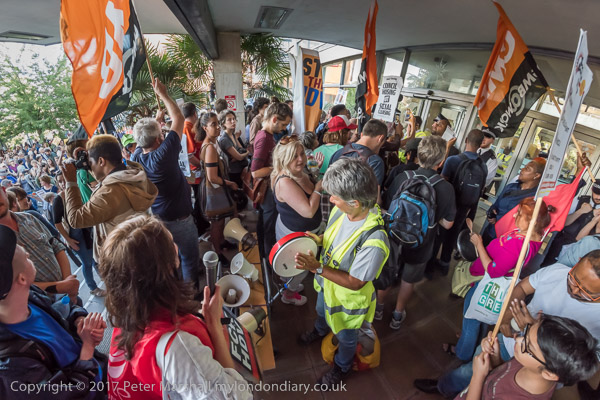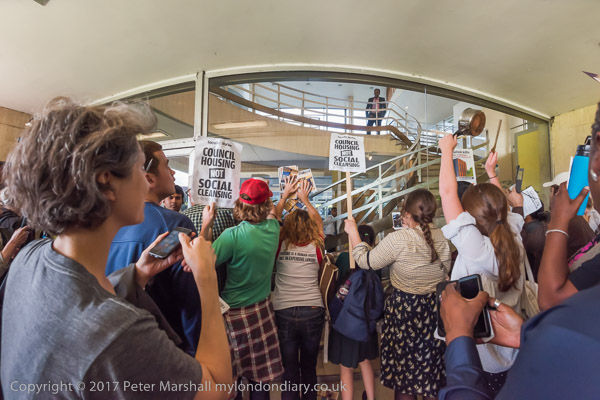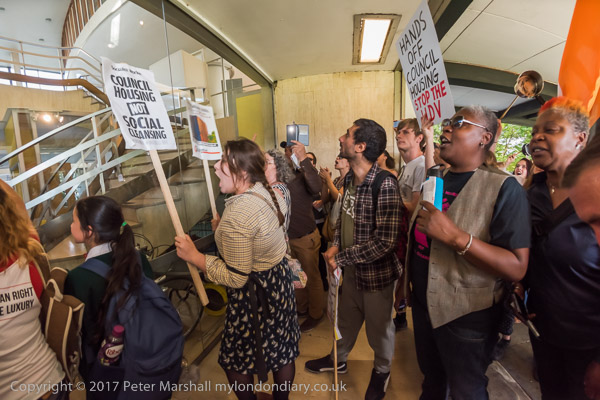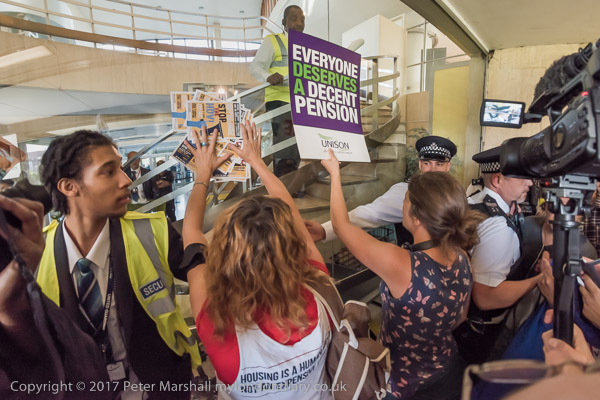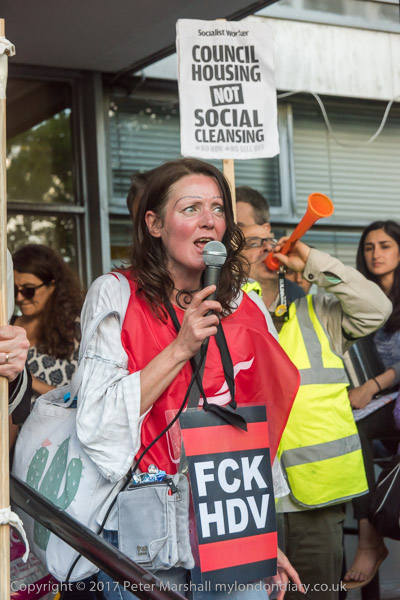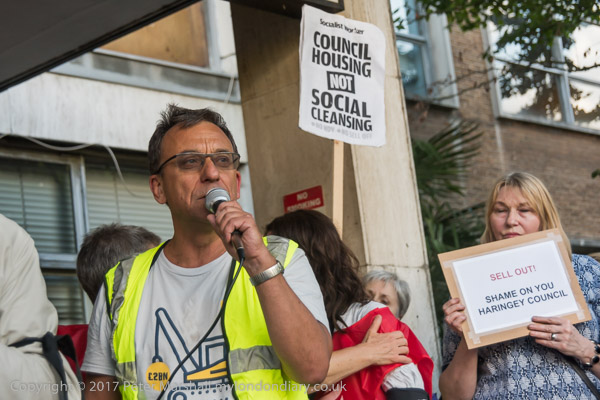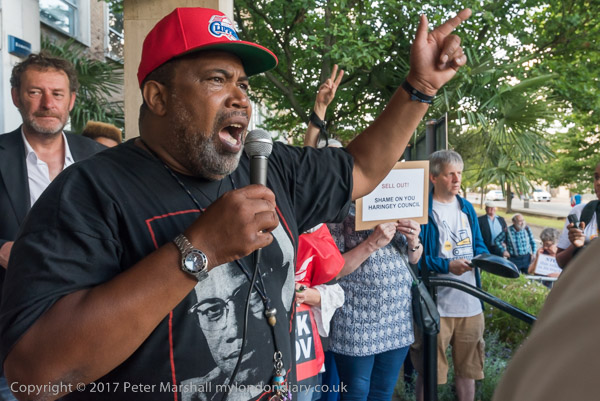Haringey Development & Ritzy Strike: On Saturday 23rd September 2017 hundreds marched from a rally in North London against the council’s plans to make a huge transfer of council housing to Australian multinational Lendlease, which would result in the demolition of thousands of council homes, replacing them largely by private housing. I left the march close to its end taking the tube to Brixton where strikers at the were marking a year of action with a rally.
Haringey Against Council Housing Sell-Off
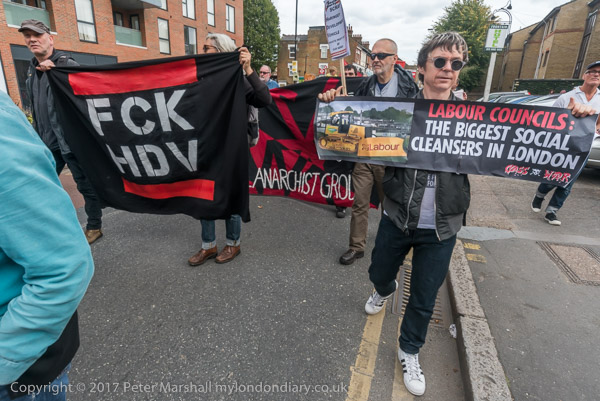
People had come to a rally and march against Haringey Council’s ‘Haringey Development Vehicle’, HDV, which proposed a £2 billion giveaway of council housing and assets to a private corporation run by Australian multinational Lendlease.
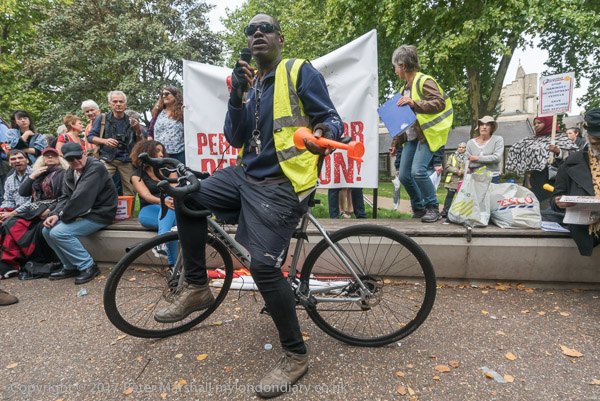
This would result in the speedy demolition of over 1,300 council homes on the Northumberland Park estate, followed by similar loss of social housing across the whole of the borough.
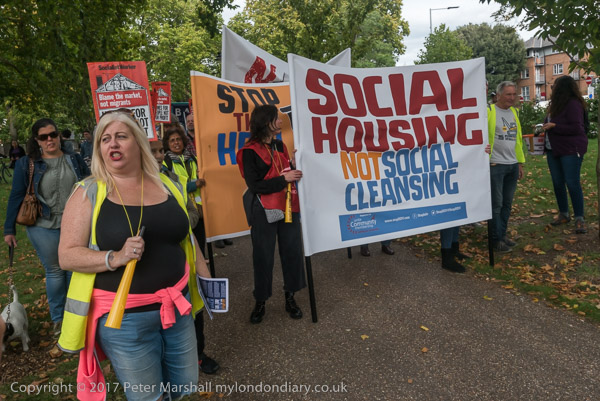
Similar ‘regeneration’ schemes in other boroughs such as Southwark, Lambeth and Barnet had resulted in the loss of truly affordable housing, with the result of social cleansing with many of the poorer residents of the redeveloped estates being forced to move out of these boroughs to areas with cheaper private housing on the outskirts of London and beyond.
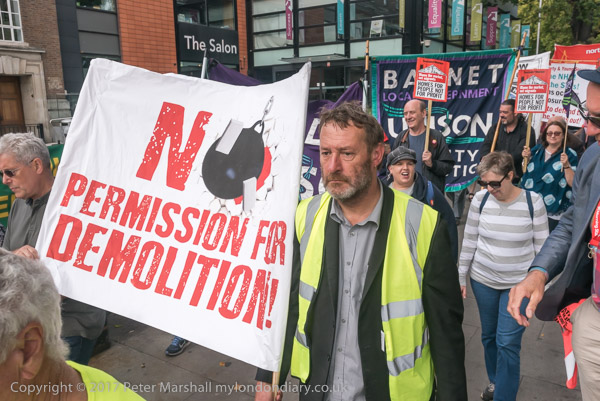
London’s housing crisis has been made much worse by the activities of wealthy foreign investors buying the new properties and keeping them empty or only occasionally used as their values rise. Among the groups on the march were those such as Class War and Focus E15 who have down much to bring this to public attention.
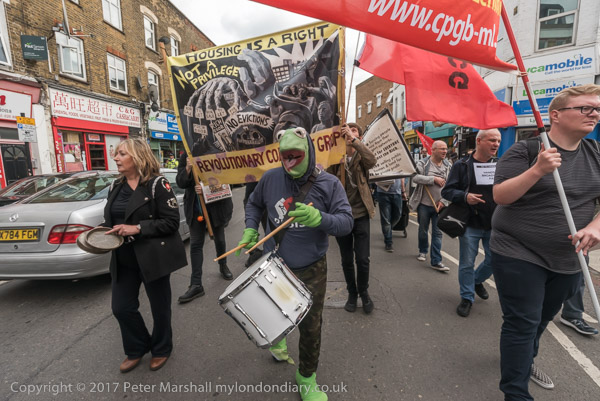
In London it is mainly Labour Councils who are in charge and responsible for the social cleansing of the poor and the loss of social housing that is taking place on a huge scale.
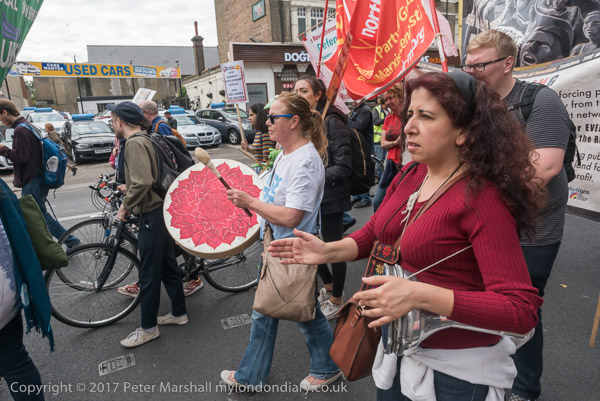
Along with speakers from estates across London where similar schemes are already taking place there were those from Grenfell Tower where cost cutting and ignoring building safety and residents’ complaints by private sector companies including the TMO set up by the council created the disaster just waiting to happen.
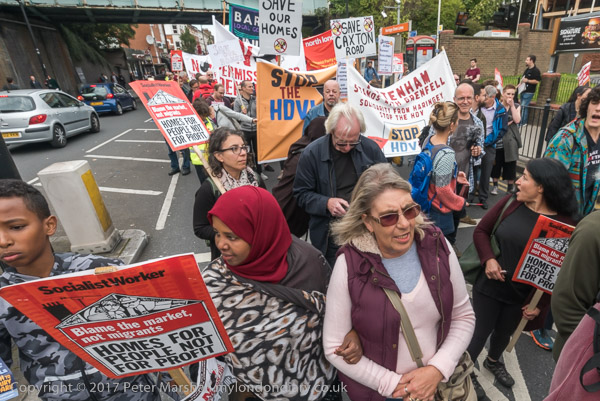
On My London Diary I quoted part of a speech by then Labour Leader Jeremy Corbyn a few days later at the Labour Party conference which condemned current practice on estate ‘regeneration’ and housing of which the HDV is the prime example.
“The disdain for the powerless and the poor has made our society more brutal and less caring. Now that degraded regime has a tragic monument: the chilling wreckage of Grenfell Tower, a horrifying fire in which dozens perished. An entirely avoidable human disaster, one which is an indictment not just of decades of failed housing policies and privatisation and the yawning inequality in one of the wealthiest boroughs and cities in the world, it is also a damning indictment of a whole outlook which values council tax refunds for the wealthy above decent provision for all and which has contempt for working class communities.”
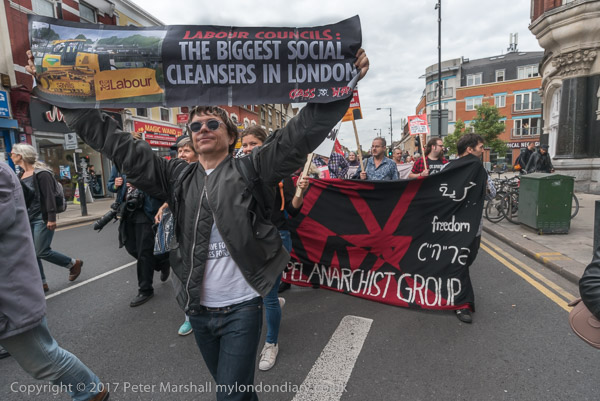
You can hear the speech in full on the article by Architects For Social Housing on the conference, where they give their comments and more detail on the section I quoted above:
“Indeed it has. And high in the list of that brutality is the estate regeneration programme that threatens, is currently being implemented against, or which has already privatised, demolished or socially cleansed 237 London housing estates, 195 of them in boroughs run by Labour councils, which vie with each other for the title of ‘least caring’, and among which the councils of Hackney, Southwark, Tower Hamlets, Lambeth and Haringey could give the Conservative-run Kensington and Chelsea council a lesson in disdain, privatisation, failed housing policies and the inequality they produce. But it’s good to hear Corbyn discard the Tories’ contemptuous terminology of ‘hardworking families’ and ‘ordinary people’ and finally – if belatedly – refer to the ‘working class’.“
They go on to comment less favourably on Corbyn who they say had ignored “the estate regeneration programme that is at the heart of London’s transformation into a Dubai-on-Thames for the world’s dirty money” and so had failed to perceive that “every estate undergoing demolition and redevelopment could produce a similar testimony of inept and incompetent local authorities, bad political decisions and a failed and broken system of democratic accountability.”
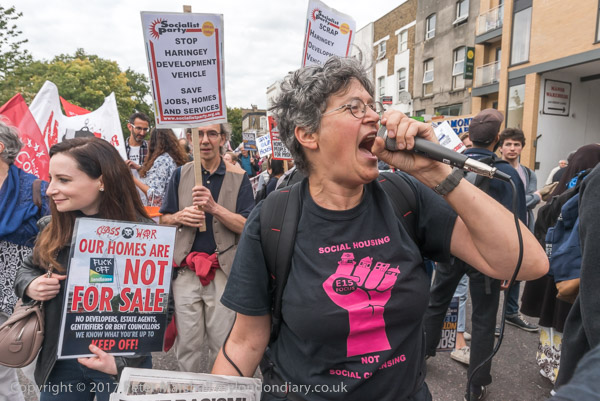
The grass roots revolt against the HDV plans resulted in a political change and the scrapping of the plans. But the Labour Party has also changed radically, and those very people responsible for those ‘least caring’ local authorities in London and across the country are now in government.
More pictures at Haringey against council housing sell-off.
One year of Ritzy strike – Brixton
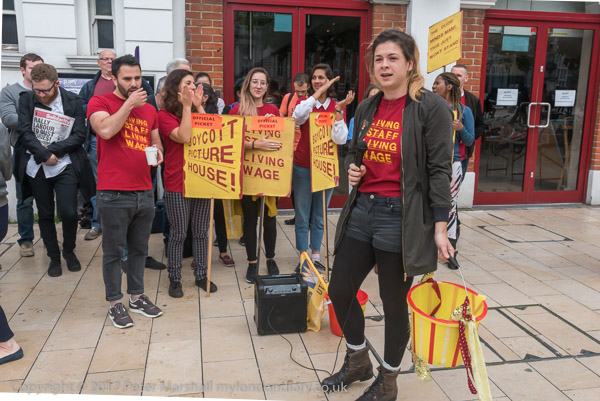
A quite different vehicle was the star of the show in Brixton, where BECTU strikers at the Ritzy Cinema were celebrating a year of strike action with a rally supported by other trade unionists, including the United Voices of the World and the IWGB and other union branches.
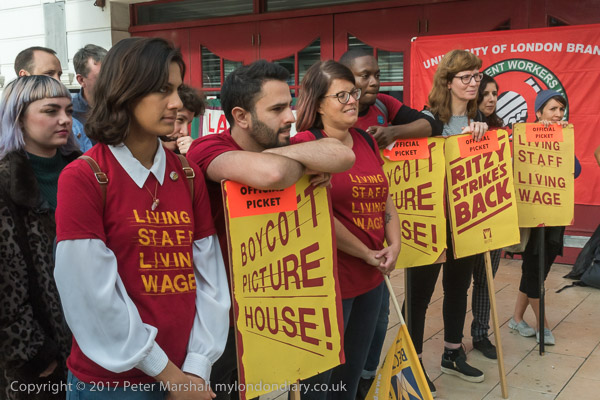
The strikers continued to demand the London Living Wage, sick pay, maternity and paternity pay, for managers, supervisors, chefs and technical staff to be properly valued for their work, and for the four sacked union reps to be reinstated.
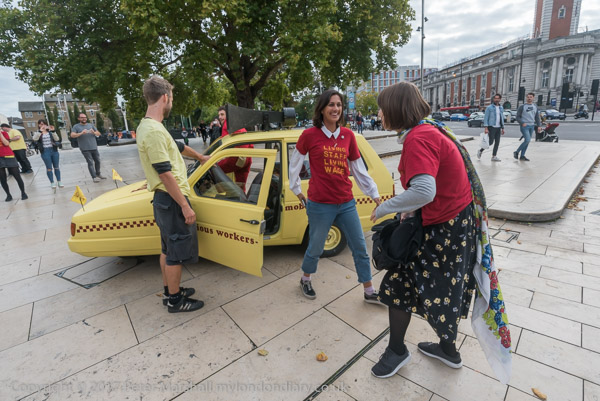
After speeches in English and Spanish, came the surprise. The vehicle in Brixton was the newly acquired ‘Precarious Workers Mobile’, a bright yellow Reliant Robin, equipped with a powerful amplifier and loudspeaker, and after more speeches this led the protesters in a slow march around central Brixton.
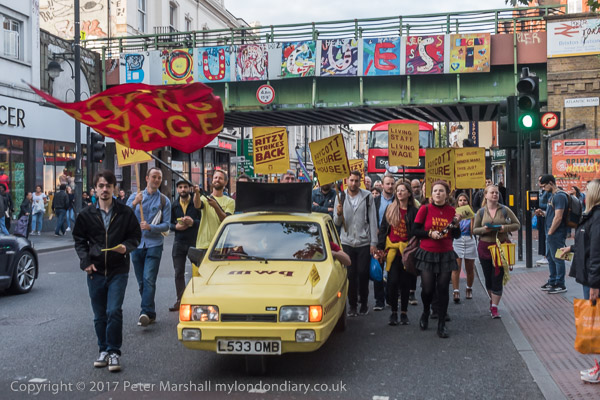
Various actions at the Ritzy had started three years before this, when workers called for a boycott of the cinema. In 2019, after an industrial tribunal had won some of their claims BECTU suspended the boycott and the Living Staff Living Wage campaign although still continuing to fight for equal pay and against other dismissals.
More pictures at One year of Ritzy strike.
Flickr – Facebook – My London Diary – Hull Photos – Lea Valley – Paris
London’s Industrial Heritage – London Photos
All photographs on this page are copyright © Peter Marshall.
Contact me to buy prints or licence to reproduce.
